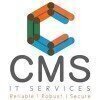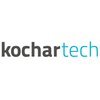
i
CSM Technologies
Filter interviews by
CSM Technologies Oracle Database Administrator Interview Questions and Answers
CSM Technologies Oracle Database Administrator Interview Experiences
2 interviews found
I applied via Company Website and was interviewed in Mar 2024. There were 2 interview rounds.
(1 Question)
- Q1. Architecture,tablespace
(1 Question)
- Q1. Salary negosastion
I applied via Company Website and was interviewed before Feb 2023. There were 2 interview rounds.
(1 Question)
- Q1. Architecture of Oracle database
- Ans.
The architecture of Oracle database consists of multiple components like instance, memory structures, and physical and logical storage.
Oracle database architecture includes an instance, which consists of memory structures like SGA and PGA.
The instance is responsible for managing the database and executing user requests.
Physical storage in Oracle database is organized into data files, control files, and redo log files.
L...
(1 Question)
- Q1. Salary negotiable
Skills evaluated in this interview
Top trending discussions






Interview questions from similar companies

I appeared for an interview in Sep 2020.
Interview Questionnaire
1 Question
- Q1. Oops concept, solid principles, filters in MVC, basics of Angular,life cycle hook
Interview Preparation Tips

I appeared for an interview before Oct 2021.

(2 Questions)
- Q1. What is Nested List with example
- Ans.
A nested list is a list that contains other lists as its elements.
Nested lists can be created using square brackets and separating the elements with commas.
Elements of a nested list can be accessed using indexing and slicing.
Example: my_list = [[1, 2, 3], [4, 5, 6], [7, 8, 9]]
Accessing element 5: my_list[1][1]
- Q2. What is queue , explain with example
- Ans.
A queue is a data structure that follows the First In First Out (FIFO) principle.
Elements are added to the back of the queue and removed from the front.
Example: A line of people waiting for a movie ticket.
Operations: Enqueue (add element to back), Dequeue (remove element from front), Peek (view front element)
Interview Preparation Tips
Basic python
Coding skills
Skills evaluated in this interview

I appeared for an interview in Sep 2017.
Interview Questionnaire
4 Questions
- Q1. Technical interview take by client technical person actually they are hiring for another client so they took total 3 technical round and final will HR round
- Q2. Asking about life cycle of Dot net mvc contols entity frame work and SQL queries
- Q3. Problem based on oops and SQL queries outputs
- Q4. Basic questions about my self ,salary discussion basic formalities form I have to fill up
Interview Preparation Tips
Experience: There were around 15 objective question that includes mvc, c#.net and SQL server. It was very simple question like different types of filters,Acton results in mvc. Basic oops concept and dot net web page regarding
Round: Resume Shortlist
Experience: After completing test round another was technical round discussed maily for mvc and SQL server questions. Around 30 mint discussion. After qualify this round another round will start from client technical staff.
General Tips: It was for 2-3 year experience person very simple to crack but focus on you which profile you are looking for study interview questions from net
Skills: Dot net mve oops concept jQuery and SQL server

I appeared for an interview in Sep 2019.
Interview Questionnaire
1 Question
- Q1. Pl sql related questions
Interview Preparation Tips
Laterly after I had lunch by 2pm Hr came n told me that Manager is not available now so we will be conducting ur further round in weekdays.
Then there was no mail or call so I purposely mailed them still haven't got proper response from them, so at last I told my friend who referd me to ask for an update the same HR told him that they want Immediate joiner so we can't process him to further round. Wasted my whole day over there

I applied via Recruitment Consultant and was interviewed before Jan 2020. There were 5 interview rounds.
Interview Questionnaire
1 Question
- Q1. What Prog Languages known? Prior Software Experience? How good on U.S. Client Face to Face and telephonic interaction for projects?
- Ans.
I am proficient in Java, Python, and C++. I have 2 years of experience in software development. I have excellent communication skills for client interaction.
Proficient in Java, Python, and C++
2 years of software development experience
Excellent communication skills for client interaction
Interview Preparation Tips

I applied via Naukri.com and was interviewed before May 2018. There were 5 interview rounds.
Interview Questionnaire
4 Questions
- Q1. Telephonic technical
- Q2. Core Java related exception handling ,design pattern ,oops solid design principle, rest API, different annotations of spring and jpa
- Q3. Same questions on telephonic round but detailed elaborate and given simple problem statement we had to justify that why it's time n space complexity valid. Rest API questions hibernate orm use
- Q4. Manager round just to check whether you have actually worked on project or not stress testing performance questions scenario questions
Interview Preparation Tips
Skills: Core Java sevlet JSP hibernate spring rest API, Communication, Body Language, Problem Solving, Analytical Skills, Decision Making Skills
Duration: 1-4 weeks

I applied via Naukri.com and was interviewed before Sep 2020. There were 4 interview rounds.
Interview Questionnaire
1 Question
- Q1. IOS Basics , iPhone programming
Interview Preparation Tips

I applied via Naukri.com and was interviewed before Oct 2020. There were 5 interview rounds.
Interview Questionnaire
1 Question
- Q1. Technical questions related to angular,c# and sql
Interview Preparation Tips
CSM Technologies Interview FAQs
Tell us how to improve this page.
CSM Technologies Interviews By Designations
- CSM Technologies Software Engineer Interview Questions
- CSM Technologies Project Associate Interview Questions
- CSM Technologies Software Developer Interview Questions
- CSM Technologies Senior Software Engineer Interview Questions
- CSM Technologies Oracle Database Administrator Interview Questions
- CSM Technologies Project Lead Interview Questions
- CSM Technologies Junior Software Engineer Interview Questions
- CSM Technologies System Administrator Interview Questions
- Show more
Interview Questions for Popular Designations
- Database Developer Interview Questions
- SQL Database Administrator Interview Questions
- Senior Database Administrator Interview Questions
- Database Engineer Interview Questions
- Database Architect Interview Questions
- SQL Server Database Administrator Interview Questions
- Mysql Database Administrator Interview Questions
- Oracle Application Database Administrator Interview Questions
- Show more
CSM Technologies Oracle Database Administrator Interview Process
based on 2 interviews
Interview experience
Interview Questions from Similar Companies
CSM Technologies Oracle Database Administrator Reviews and Ratings
based on 2 reviews
Rating in categories
|
Software Engineer
351
salaries
| ₹1.8 L/yr - ₹5.2 L/yr |
|
Programmer Analyst
89
salaries
| ₹4.3 L/yr - ₹13.2 L/yr |
|
Senior Software Engineer
83
salaries
| ₹3.5 L/yr - ₹8.4 L/yr |
|
Software Developer
82
salaries
| ₹1.8 L/yr - ₹6 L/yr |
|
Junior Software Engineer
47
salaries
| ₹1.8 L/yr - ₹3.6 L/yr |

ITC Infotech

CMS IT Services

KocharTech

Xoriant
- Home >
- Interviews >
- CSM Technologies Interview Questions >
- CSM Technologies Oracle Database Administrator Interview Questions













